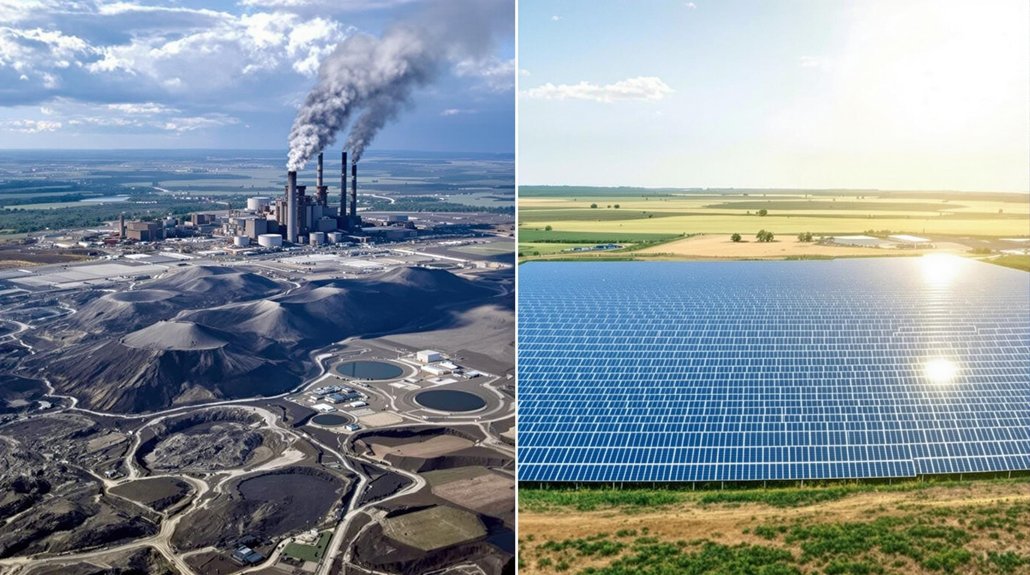Recent studies show that fossil fuel production creates 500 times more waste than solar energy. This includes ash, sludge, and toxic emissions that harm the environment and public health. Solar panels mainly produce waste during manufacturing and at end-of-life. As countries face growing climate challenges, this striking difference raises questions about our energy choices. What’s the true cost of traditional power sources when all this hidden waste is factored in?
The battle between traditional energy sources and renewable alternatives is reshaping our world’s power landscape. Recent studies highlight a stark difference in waste production: fossil fuels generate approximately 500 times more waste than solar energy systems. This massive disparity comes from emissions, ash, sludge, and toxic byproducts that fossil fuels create throughout their lifecycle.
Unlike solar energy, which primarily produces waste during manufacturing and end-of-life recycling, fossil fuels continuously generate waste during extraction, processing, transportation, and combustion. Coal plants leave behind mountains of ash, while oil and gas operations create persistent chemical waste that threatens ecosystems. Coal combustion is particularly harmful as it releases the highest levels of CO2 per unit of energy produced compared to other fossil fuels. Solar power, by contrast, is a non-polluting resource that doesn’t contaminate water supplies or degrade the earth.
Scientists point out that fossil fuels face an unavoidable decline in availability. These resources are finite and becoming harder to access, while solar energy remains abundant and virtually limitless as long as the sun shines. This fundamental difference affects long-term energy security for communities worldwide. The global investment trend shows a significant shift toward renewables, with $303.5 billion invested in 2020 alone.
The cost equation has shifted dramatically in recent years. Solar energy prices have dropped considerably, making it competitive with—and sometimes cheaper than—fossil fuel options. While fossil fuels experience price volatility due to market and geopolitical factors, solar installations offer predictable costs after the initial investment.
When comparing efficiency, fossil fuel plants convert energy at higher rates—up to 40% for coal and 60% for natural gas. Solar panels typically operate at 15-20% efficiency. However, experts note that this comparison doesn’t account for the environmental costs or the energy used in extracting and transporting fossil fuels.
Environmental impacts extend beyond waste production. Fossil fuels contribute to climate change through greenhouse gas emissions and cause direct environmental damage through extraction processes. Solar energy produces negligible emissions during operation and has minimal environmental impact after installation.
The evidence suggests a clear direction for energy development. As solar technology continues to advance and fossil fuel reserves diminish, the gap in sustainability, cost-effectiveness, and environmental impact will likely continue to widen.








